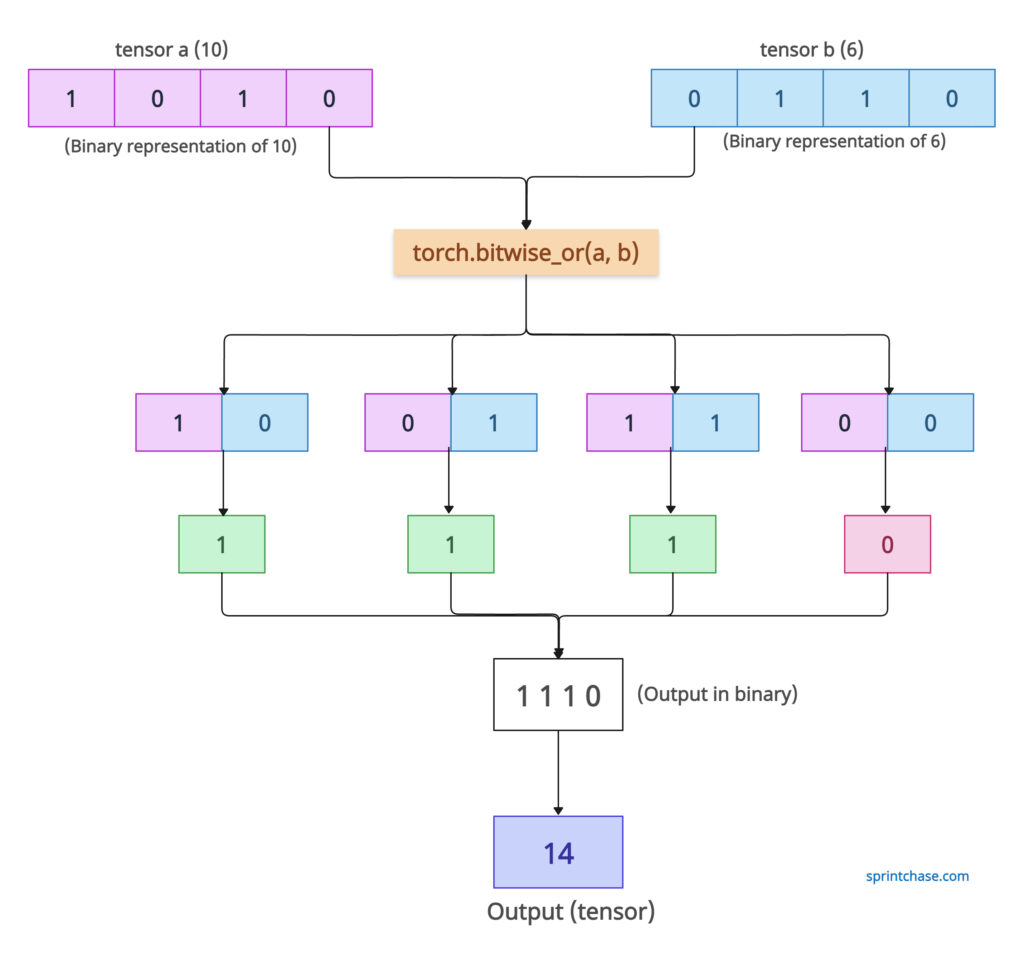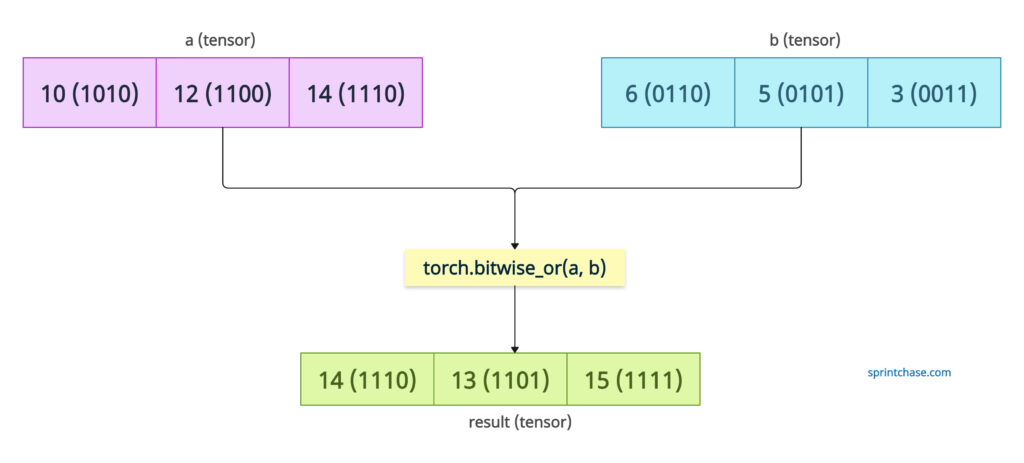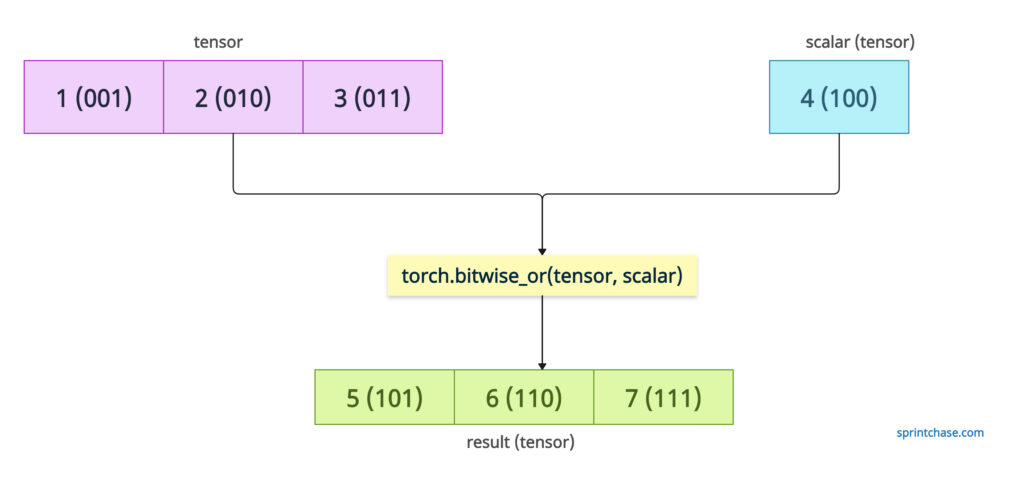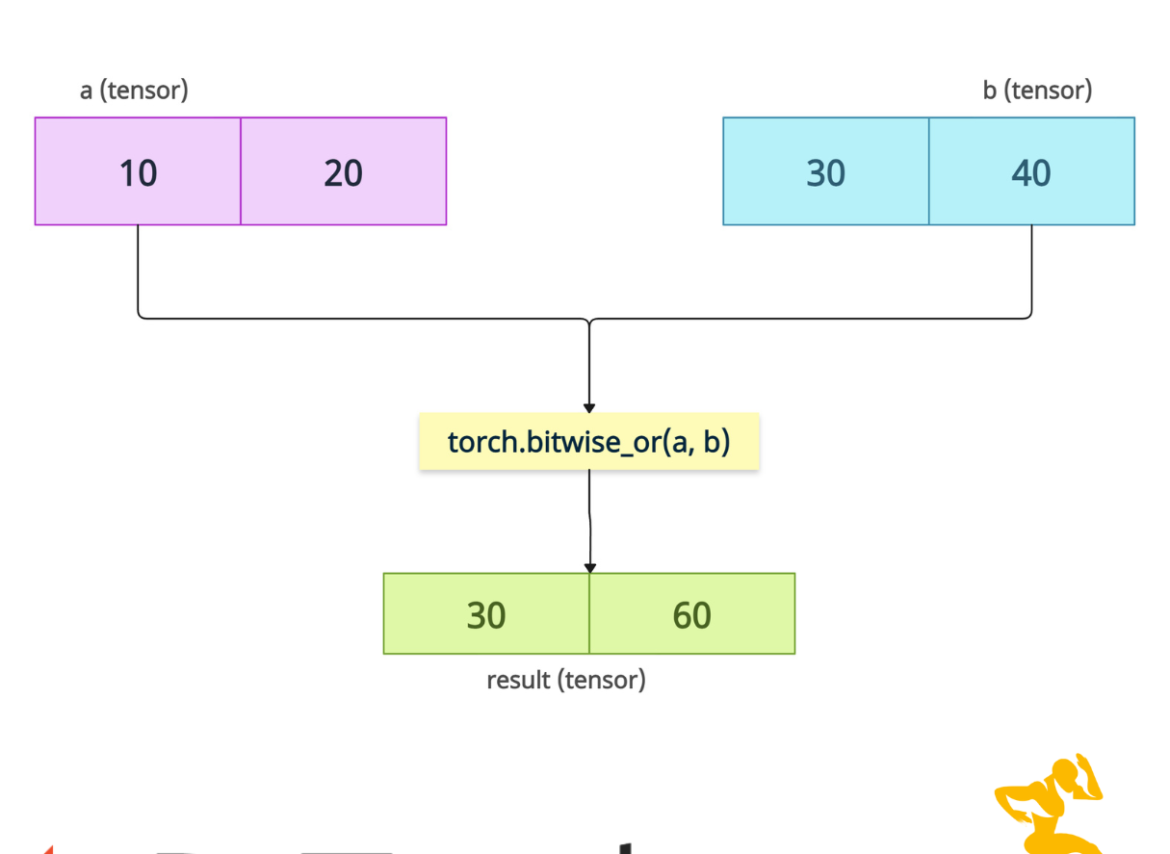The torch.bitwise_or() method performs a bitwise OR operation on the binary representations of the integer values in the tensors. It supports both tensor-tensor operations and tensor-scalar operations.
Before we proceed, we need to understand how the bitwise OR works with 1 and 0.Bitwise OR Truth Table
| Input A | Input B | A | B (Output) |
| 0 | 0 | 0 |
| 0 | 1 | 1 |
| 1 | 0 | 1 |
| 1 | 1 | 1 |

As shown in the figure above, we defined two tensors with a single element. We have a tensor(10) and tensor(7) and we need to perform bitwise_or operation, it will be done like this:
The binary of the first tensor 10 is 1010.
The binary of the second tensor 6 is 0110.
Now, compare the first bits of both tensors. If input a is 1 and input b is 0, the output is 1. The output bits are based on the above table. Therefore, verify each output against the table mentioned above.
Check the second bits of both the tensors: 0 and 1, the output is 1.
For the third element of both tensors, 1 and 1, the output is 1.
For the fourth element of both tensors, 0 and 0, the output is 0.
That means the output is (1 1 1 0). It is the binary representation of 14.
So, the output tensor will be tensor(14).
Syntax
torch.bitwise_or(input, other, out=None)
Parameters
| Argument | Description |
| input (Tensor) | It represents an input tensor. The first tensor. |
| other (Tensor or Scalar, optional) | It represents the second input tensor or a scalar value to perform the bitwise OR with. |
| out (Tensor, optional) |
It is an output tensor to store the result. |
Element-wise bitwise OR between two tensors

Let’s define two tensors with three elements each and perform a bitwise OR operation between the corresponding elements of the two tensors.
import torch # Define two integer tensors a = torch.tensor([10, 12, 14]) # Binary: [1010, 1100, 1110] b = torch.tensor([6, 5, 3]) # Binary: [0110, 0101, 0011] # Perform bitwise OR result = torch.bitwise_or(a, b) print(result) # Output: tensor([14, 13, 15]) # Binary: [1110, 1101, 1111]
Based on the previously defined logic, 10 and 6 return 14, 12 and 5 return 13, and 14 and 3 return 15.
Bitwise OR with a Scalar

If the first value is a tensor and the second value is a scalar, the .bitwise_or() method applies a bitwise OR operation between a tensor and a scalar value.
import torch tensor = torch.tensor([1, 2, 3]) # Binary: 001, 010, 011 scalar = 4 # Binary: 100 result = torch.bitwise_or(tensor, scalar) print(result) # Binary: 101, 110, 111 # Output: tensor([5, 6, 7])
Boolean tensors
Let’s define two boolean tensors containing True and False values and perform the bitwise_or operation.
import torch boolean_a = torch.tensor([True, False, True, False]) boolean_b = torch.tensor([False, True, True, False]) # Perform element-wise logical OR operation result_and = torch.bitwise_or(boolean_a, boolean_b) print(result_and) # Output: tensor([ True, True, True, False])The result will be false if both elements are False. Otherwise, it will be True.
Unsupported Types
If your input tensor contains unsupported types (e.g., floating-point tensors), it will throw an error.
import torch
# floating-point tensors
a = torch.tensor([11.0, 21.0])
b = torch.tensor([70.0, 51.0])
try:
output = torch.bitwise_or(a, b)
except RuntimeError as e:
print(e)
# Output: "bitwise_or_cpu" not implemented for 'Float'
It only accepts integer-based tensor types. It does not work with floating points or complex numbers.
There is another function related to this one, called the torch.bitwise_and() method, which we covered on this website.





